Established 1984 Category of Turner Prize | First awarded 1984 | |
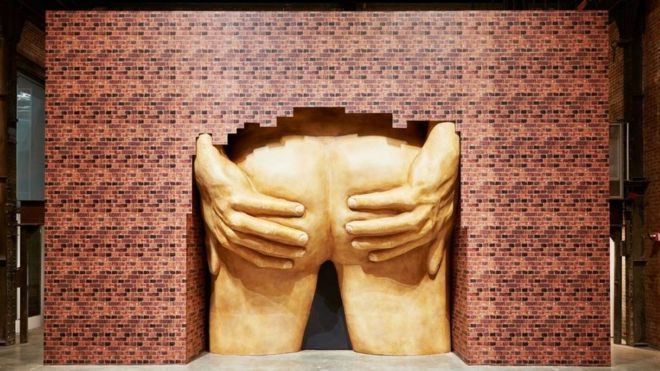 | ||
Ceremony date December 5, 2016, 1:30 PM PST Winners & Nominees Helen MartenEucalyptus Let Us In - Lunar Nibs, Helen Marten, Winner, Anthea HamiltonAnthea Hamilton: Lichen! Libido! Chastity!, Anthea Hamilton, Nominee, Michael DeanSic Glyphs - Qualities of Violence, Michael Dean, Nominee, Josephine PrydeLapses in Thinking by the Person I am, Josephine Pryde, Nominee, AssembleGranby Four Streets Project, Assemble, Winner, Nicole WermersInfrastrucktur, Nicole Wermers, Nominee, Janice KerbelDOUG, Janice Kerbel, Nominee, Bonnie CamplinThe Military Industrial Complex, Bonnie Camplin, Nominee, Duncan CampbellIt for Others, Duncan Campbell, Winner, Tris Vonna-MichellPostscript II (Berlin), Tris Vonna-Michell, Nominee, Ciara PhillipsWorkshop (2010 - ongoing), Ciara Phillips, Nominee, James RichardsRosebud, James Richards, Nominee, Laure ProuvostWantee - Farfromwords: car mirrors eat raspberries when swimming through the sun - to swallow sweet smells, Laure Prouvost, Winner, Lynette Yiadom-BoakyeExtracts and Verses, Lynette Yiadom-Boakye, Nominee, Tino SehgalThese Associations - This Variation, Tino Sehgal, Nominee, David ShrigleyDavid Shrigley: Brain Activity, David Shrigley, Nominee, Elizabeth PriceHere, Elizabeth Price, Winner, Marvin Gaye ChetwyndOdd Man Out, Marvin Gaye Chetwynd, Nominee, Luke FowlerLuke Fowler at Inverleith House, Luke Fowler, Nominee, Paul NobleWelcome to Nobson, Paul Noble, Nominee | ||
Helen marten turner prize 2016 tateshots
The Turner Prize, named after the English painter J. M. W. Turner, is an annual prize presented to a British visual artist under the age of 50. Awarding the prize is organised by the Tate gallery and staged at Tate Britain. Since its beginnings in 1984 it has become the UK's most publicised art award. The award represents all media.
Contents
- Helen marten turner prize 2016 tateshots
- Anthea hamilton turner prize 2016 tateshots
- Background
- 1984
- 1985
- 1986
- 1987
- 1988
- 1989
- 1990
- 1991
- 1992
- 1993
- 1994
- 1995
- 1996
- 1997
- 1998
- 1999
- 2000
- 2001
- 2002
- 2003
- 2004
- 2005
- 2006
- 2007
- 2008
- 2009
- 2010
- 2011
- 2012
- 2013
- 2014
- 2015
- 2016
- For
- Against
- Alternative and spoof prizes
- References
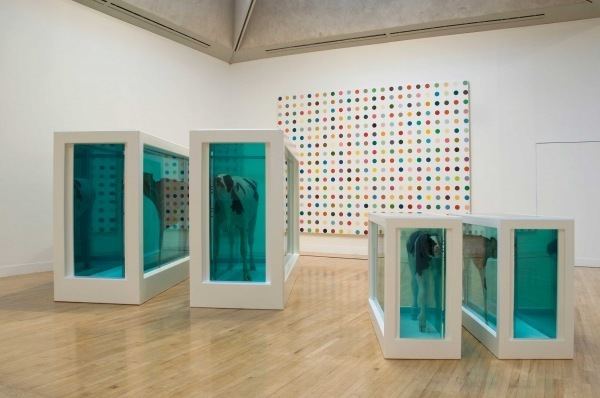
As of 2004, the monetary award was established at £40,000. There have been different sponsors, including Channel 4 television and Gordon's Gin. A prominent event in British culture, the prize has been awarded by various distinguished celebrities: in 2006 this was Yoko Ono, and in 2012 it was presented by Jude Law.
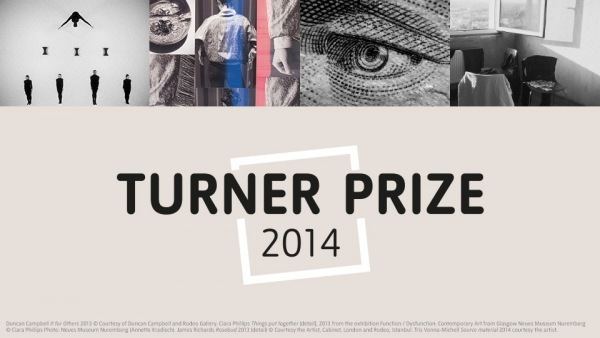
It is a controversial event, mainly for the exhibits, such as The Physical Impossibility of Death in the Mind of Someone Living – a shark in formaldehyde by Damien Hirst – and My Bed, a dishevelled bed by Tracey Emin. Controversy has also come from other directions, including a Culture Minister (Kim Howells) criticising exhibits, a guest of honour (Madonna) swearing, a prize judge (Lynn Barber) writing in the press, and a speech by Sir Nicholas Serota (about the purchase of a trustee's work).
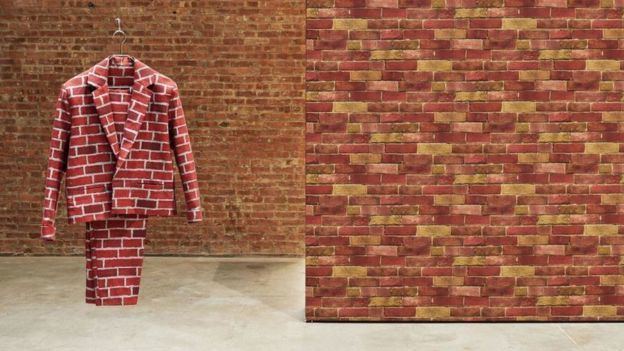
"If this is the best British artists can produce then British art is lost. It is cold mechanical, conceptual bullshit.
Kim Howells.
P.S. The attempts at conceptualisation are particularly pathetic and symptomatic of a lack of conviction."
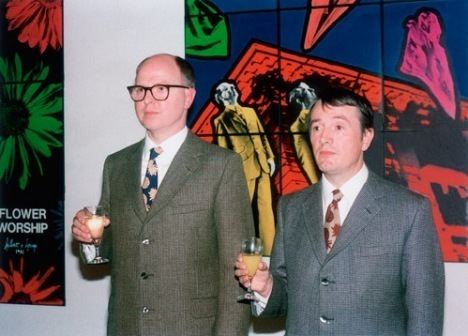
Anthea hamilton turner prize 2016 tateshots
Background
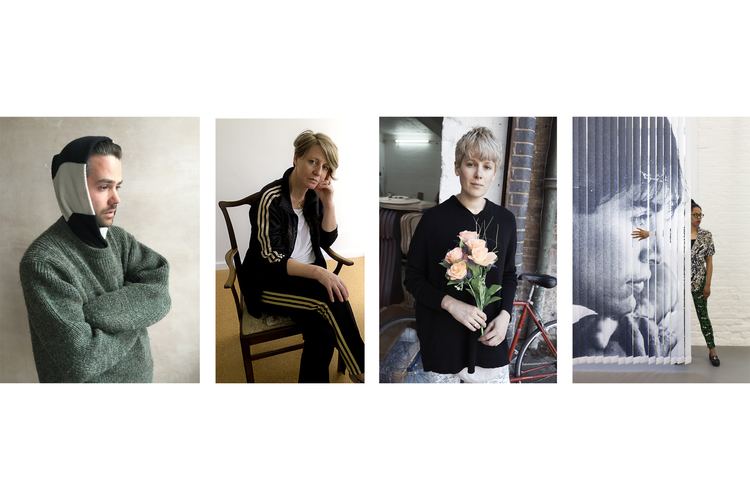
The prize was named after Turner because while he is now considered one of the country's greatest artist, while he was active his work was controversial. While he is now looked at as a traditionalist, his new approach to landscape painting changed the course of art history, as many of the Turner Prize winners aspire to do.
Each year after the announcement of the four nominees and during the build-up to the announcement of the winner, the Prize receives intense attention from the media. Much of this attention is critical and the question is often asked, "Is this art?"
Artists are chosen based upon a showing of their work that they have staged in the preceding year. Nominations for the prize are invited from the public, although this was widely considered to have negligible effect—a suspicion confirmed in 2006 by Lynn Barber, one of the judges. Typically, there is a three-week period in May for public nominations to be received; the short-list (since 1991, four artists) is announced in July; a show of the nominees' work opens at Tate Britain in late October; the prize itself is announced at the beginning of December. The exhibition remains on view until January. The prize is officially not judged on the Tate show, however, but on the earlier exhibition for which the artist was nominated.
The exhibition and prize rely on commercial sponsorship. By 1987, money for the prize was provided by Drexel Burnham Lambert; its withdrawal after its demise led to the cancellation of the prize for 1990. Channel 4, an independent television channel, stepped in for 1991, doubling the prize money to £20,000, and supporting the event with documentaries and live broadcasts of the prize-giving. In 2004, they were replaced as sponsors by Gordon's Gin, doubling the prize money to £40,000, with £5,000 going to each of the shortlisted artists, and £25,000 to the winner.
As much as the shortlist of artists reflects the state of British Art, the composition of the panel of judges, which includes curators and critics, provides some indication of who holds influence institutionally and internationally, as well as who are rising stars. Tate Director Sir Nicholas Serota has been the Chair of the jury since his tenure at the Tate (with the exception of the current year when chairman is the Director of Tate Liverpool, where the prize is being staged). There are conflicting reports as to how much personal sway he has over the proceedings.
The media success of the Turner Prize contributed to the success of (and was in turn helped by) the late 1990s phenomena of Young British Artists (several of whom were nominees and winners), Cool Britannia, and exhibitions such as the Charles Saatchi-sponsored Sensation exhibition.
Most of the artists nominated for the prize selection become known to the general public for the first time as a consequence. Some have talked of the difficulty of the sudden media exposure. Sale prices of the winners have generally increased. Chris Ofili, Anish Kapoor and Jeremy Deller later became trustees of the Tate. Some artists, notably Sarah Lucas, have declined the invitation to be nominated.
1984
The first Turner Prize was awarded to Malcolm Morley, an English artist living in the United States. Other nominees included sculptor Richard Deacon, graphic-styled collaborative duo Gilbert & George, abstract painter Howard Hodgkin and sculpture/installation artist Richard Long.
1985
Howard Hodgkin is awarded the Turner Prize for A Small Thing But My Own. Other nominees included Terry Atkinson, sculptor Tony Cragg, Ian Hamilton Finlay, Milena Kalinovska and painting/printing artist John Walker. The prize was awarded by celebrity presenter Sir Richard Attenborough.
1986
The controversial art duo Gilbert & George were awarded after a previous nomination in 1984. Other nominees included Art & Language (collaborative group composed of Michael Baldwin and Mel Ramsden), sculpture/printing artist Victor Burgin, painter Derek Jarman, painter Stephen McKenna and sculptor Bill Woodrow.
1987
Sculpture artist Richard Deacon is awarded. Other nominees included graphic-style painter/printer Patrick Caulfield, Helen Chadwick, Richard Long, Declan McGonagle and Thérèse Oulton. The prize was presented by George Melly.
1988
Sculpture artist Tony Cragg is awarded. Other nominees included figurative/portrait painter Lucian Freud, Pop artist Richard Hamilton, Richard Long, David Mach (graduate of Duncan of Jordanstone College of Art), printer Boyd Webb, sculptor Alison Wilding and Richard Wilson. The appointment of Tate Director, Nicholas Serota, led to many changes such as the introduction of an annual rehang of the Collection and giving priority to modern and contemporary art. During this period the future of the Prize was uncertain. The Turner Prize was modified to be an artist-only prize without a published shortlist and a solo exhibition was awarded to the winner, Tony Cragg.
1989
Sculpture and installation artist Richard Long is presented the prize after three previous nominations. Controversially, Long is awarded for his lifetime body of work rather than an exhibition of work in 1989. Other nominees included painter Gillian Ayres, figurative painter Lucian Freud, Italian-born sculptor Giuseppe Penone, painter Paula Rego, abstract painter Sean Scully and Richard Wilson.
1990
No prize due to lack of sponsorship. Under Tate Director and Turner Prize chairman Nicholas Serota, changes are made to involve the public in the viewing of the nominated artist such as a published shortlist, a nomination of four shortlisted artists and an individual exhibition of nominated work within the Tate.
1991
Anish Kapoor received the prize for an untitled piece in sandstone and pigment. Other nominees included abstract painters Ian Davenport, Fiona Rae and sculptor Rachel Whiteread.
1992
Grenville Davey received the prize for HAL, a work consisting of two abstract steel objects, each measuring 244 x 122 cm (96 x 48 in). Other nominees included the Young British Artist (yBA) Damien Hirst for his installations, photographer David Tremlett and sculptor Alison Wilding.
1993
Rachel Whiteread was the winner for House, a concrete cast of a house on the corner of Grove Road and Roman Road, London E3. Jimmy Cauty and Bill Drummond of the K Foundation received media coverage for the award of the "Anti-Turner Prize", £40,000 to be given to the "worst artist in Britain", voted from the real Turner Prize's short-list. Rachel Whiteread was awarded their prize. She refused to accept the money at first, but changed her mind when she heard the cash was to be burned instead, and gave £30,000 of it to artists in financial need and the other £10,000 to the housing charity, Shelter. The K Foundation went on to make a film in which they burned £1 million of their own money (Watch the K Foundation Burn a Million Quid). Other nominees included painter Sean Scully, Laotian-born Vong Phaophanit and printer Hannah Collins.
1994
Popular sculptor Antony Gormley was awarded the 1994 Turner Prize. Other nominees included video artist Northern Irish-born Willie Doherty, whose work The Only Good One Is A Dead One was the first video piece to be nominated for the prize, painter Peter Doig and multi-media Shirazeh Houshiary.
1995
Damien Hirst is awarded the 1995 Turner Prize, which included his notorious sculpture Mother and Child, Divided. Other nominees included Lebanese-born installation/video artist Mona Hatoum, abstract painter Callum Innes and multi-media artist Mark Wallinger.
1996
Douglas Gordon becomes the first video artist to win the Turner Prize. Other nominees included photographer Craigie Horsfield, painter Gary Hume and installation artist Simon Patterson.
1997
The winner, Gillian Wearing, showed a video 60 minutes of Silence (1996), where a group of actors were dressed in police uniforms and had to stand still for an hour (occasional surreptitious scratching could be observed).
A drunken Tracey Emin walked out of a live Channel 4 discussion programme, presented as part of the coverage of the award. The discussion was chaired by Tim Marlow and also included Roger Scruton, Waldemar Januszczak, Richard Cork, David Sylvester and Norman Rosenthal. Emin 'wrote' about the incident in her 2005 book Strangeland, describing her shock at reading The Guardian writeup the following day.
This was the only time in history with an all-female shortlist including sculptor Christine Borland, Angela Bulloch and sculptor Cornelia Parker.
1998
The talking point was Chris Ofili's use of balls of elephant dung attached to his mixed media images on canvas, as well as being used as supports on the floor to prop them up. An illustrator deposited dung on the steps in protest against his work. Ofili won the prize and it was the first time in twelve years that a painter had done so; it was presented by French fashion designer agnès b. Ofili joked, "Oh man. Thank God! Where's my cheque?" and said: "I don't know what to say. I am just really happy. I can't believe it. It feels like a film and I will watch the tape when I get home." One of Ofili's works, No Woman No Cry is based on the murder of Stephen Lawrence, killed in a race attack.
The jury included musician Neil Tennant, author Marina Warner, curator Fumio Nanjo and British Council officer Ann Gallagher, chaired by Nicholas Serota.
Other nominees included installation artist Tacita Dean, sculptor Cathy de Monchaux and video artist Sam Taylor-Wood. Ofili became the first painter to win the Turner Prize since Howard Hodgkin in 1985.
1999
The Prize was given to Steve McQueen for his video based on a Buster Keaton film. Some media attention was given to Tracey Emin's exhibit My Bed, which was a double bed in a dishevelled state with stained sheets, surrounded by detritus such as soiled underwear, condoms, slippers and empty drink bottles. Two artists, Yuan Chai and Jian Jun Xi, jumped onto the bed, stripped to their underwear, and had a pillow fight. Police detained the two, who called their performance Two Naked Men Jump into Tracey's Bed. Other nominees included Steven Pippin and collaborative sibling duo Jane and Louise Wilson.
2000
The prize was won by Wolfgang Tillmans. Other entries included a large painting by Glenn Brown based very closely on a science fiction illustration published some years previously. Michael Raedecker and Tomoko Takahashi were also nominated.
The Stuckist art group staged their first demonstration against the prize, dressed as clowns, describing it as an "ongoing national joke" and "a state-funded advertising agency for Charles Saatchi", adding "the only artist who wouldn't be in danger of winning the Turner Prize is Turner", and concluding that it "should be re-named The Duchamp Award for the destruction of artistic integrity". The Guardian announced the winner of Turner Prize with the headline "Turner Winner Riles the Stuckists".
2001
Controversy was caused by winner Martin Creed's installation Work No. 227: the lights going on and off consisting of an empty room whose lighting periodically came on and went off. Artist Jacqueline Crofton threw eggs at the walls of the room containing Creed's work as a protest. At the prize ceremony, Madonna gave him the prize and said, "At a time when political correctness is valued over honesty I would also like to say "Right on, motherfuckers!"." This was on live TV before the 9 pm watershed and an attempt to "bleep" it out was too late. Channel 4 were subsequently given an official rebuke by the Independent Television Commission.
Other nominees included Richard Billingham, video/installation artist (and now film director) Isaac Julien and installation artist Mike Nelson.
2002
The media focused on a large display by Fiona Banner whose wall-size text piece, Arsewoman in Wonderland, described a pornographic film in detail. The Guardian asked, "It's art. But is it porn?" calling in "Britain's biggest porn star", Ben Dover, to comment. Culture Minister Kim Howells made a scathing criticism of the exhibits as "conceptual bullshit". Prince Charles wrote to him: "It's good to hear your refreshing common sense about the dreaded Turner prize. It has contaminated the art establishment for so long." Graffiti artist Banksy stencilled "Mind the crap" on the steps of the Tate, who called in emergency cleaners to remove it. The prize was won by Keith Tyson.
Other nominees included Liam Gillick and Catherine Yass.
2003
Jake and Dinos Chapman caused press attention for a sculpture, Death, that appeared to be two cheap plastic blow-up sex dolls with a dildo. It was in fact made of bronze, painted to look like plastic.
Attention was also given to Grayson Perry who exhibited pots decorated with sexual imagery, and was the prize winner. He wore a flouncy skirt to collect the prize, announced by Sir Peter Blake, who said, after being introduced by Sir Nicholas Serota, "Thank you very much Nick. I'm quite surprised to be here tonight, because two days ago I had a phone call asking if I would be a judge for the Not the Turner Prize. And two years ago I was asked by the Stuckists to dress as a clown and come and be on the steps outside, so I am thrilled and slightly surprised to be here."
Other nominees included Willie Doherty (his second nomination since 1994) and Anya Gallaccio.
2004
The media focused on a large computer simulation of a former hideout of Osama bin Laden by Ben Langlands and Nikki Bell, as well as the fact that one of their exhibits, a film in a Kabul courtroom was withdrawn as it related to an ongoing trial of a suspected Afghan warlord. Betting favourite Jeremy Deller won the prize with his film Memory Bucket, documenting both George W. Bush's hometown Crawford, Texas – and the siege in Waco nearby. The prize money was increased this year with £25,000 to the winner, and, for the first time, other nominees were rewarded (with £5,000 each).
Other nominees included Kutluğ Ataman and installation/photograph/sculpture artist Yinka Shonibare, who was tipped as the public's favourite among the other nominees.
2005
A great deal was made in the press about the winning entry by Simon Starling, which was a shed that he had converted into a boat, sailed down the River Rhine and turned back into a shed again. Two newspapers bought sheds and floated them to parody the work. The prize was presented by Culture Minister, David Lammy. Before introducing him, Sir Nicholas Serota, in an "unusual, possibly unprecedented" move, took the opportunity to make "an angry defence" of the Tate's purchase of The Upper Room.
2006
The nominees were announced on 16 May 2006. The exhibition of nominees' work opened at Tate Britain on 3 October. Yoko Ono, the celebrity announcer chosen for the year, declared Tomma Abts the winner on 4 December during a live Channel 4 broadcast, although this was part of the evening news broadcast, rather than in a dedicated programme as in recent years. The total prize money was £40,000. £25,000 awarded to the winner and £5,000 to each of the other 3 nominees. The prize was sponsored by the makers of Gordon's Gin.
Under the Freedom of Information Act, The Sunday Telegraph obtained emails between the Tate and judge Lynn Barber, which revealed that the judges had been sent a list of shows by artists too late to be able to see them and instead were being supplied with catalogues and photographs of work.
More controversy ensued when Barber wrote in The Observer about her troubles as a judge, even asking, "Is it all a fix?", a comment subsequently displayed on a Stuckist demonstration placard, much to her chagrin.
The Judges were:
Lynn Barber, journalist, The ObserverMargot Heller, director, South London GalleryMatthew Higgs, Director and Chief Curator, White Columns, New YorkAndrew Renton, writer and Director of Curating, Goldsmiths CollegeNicholas Serota, director, Tate and Chairman of the Jury2007
The winner of the £25,000 Prize was Mark Wallinger. His display at the Turner Prize show was Sleeper, a film of him dressed in a bear costume wandering around an empty museum, but the prize was officially given for State Britain, which recreated all the objects in Brian Haw's anti-war display in Parliament Square, London. The judges commended Wallinger's work for its "immediacy, visceral intensity and historic importance", and called it "a bold political statement with art's ability to articulate fundamental human truths." The prize was presented by Dennis Hopper.
For the first time in its 23-year history, the Turner Prize was held outside London, in Tate Liverpool (in support of Liverpool being the European Capital of Culture in 2008). Concurrently there was an exhibition of previous winners at Tate Britain in London.
Unlike recent years, Sir Nicholas Serota was not the jury chairman; instead, the chairman was Christoph Grunenberg, the Director of Tate Liverpool. The panel was:
Fiona Bradley, Director of the Fruitmarket Gallery, EdinburghMichael Bracewell, critic and writerThelma Golden, Director and Chief Curator of the Studio Museum, HarlemMiranda Sawyer, writer and broadcasterChristoph Grunenberg, Director of Tate Liverpool (Chairman of the Jury)The nominees were:
Mark Wallinger for his Tate Britain installation, State BritainNathan Coley, a Glasgow artist, who makes installations based on buildingsZarina Bhimji, a Ugandan Asian photographer and filmmakerMike Nelson, an installation artistNelson and Wallinger had both previously been nominated for the prize.
The Stuckists announced that they were not demonstrating for the first time since 2000, because of "the lameness of this year's show, which does not merit the accolade of the traditional demo". Instead, art group AAS re-enacted previous Stuckist demonstrations in protest against their own practice at the Royal Standard Turner Prize Extravaganza.
2008
Mark Leckey was the winner of the Turner Prize of 2008.
For the second year running, Sir Nicholas Serota did not chair the Turner Prize jury; instead Stephen Deuchar, director of Tate Britain, was the chair. The other members were Jennifer Higgie, editor of frieze, Daniel Birnbaum, rector of the Städelschule international art academy, Frankfurt, architect David Adjaye, and Suzanne Cotter, senior curator, Modern Art Oxford. The prize winner received £25,000 and the other three nominees £5,000 each. In recent years the prize has attracted commercial sponsorship, but did not have any during the 2008 events. The nominees were Runa Islam, Mark Leckey, Goshka Macuga, and Cathy Wilkes; the Prize exhibition opened at Tate Britain on 30 September and the winner was announced on 1 December.
2009
The winner of the £25,000 Prize was Richard Wright. Stephen Deuchar again chaired the jury.
The other shortlisted artists were Enrico David, Roger Hiorns and Lucy Skaer.
2010
The winner was Susan Philipsz who graduated from Duncan of Jordanstone College of Art & Design in Dundee. She was the first artist ever to win with a purely aural work, having made an installation under three bridges in Glasgow in which she sang folklorised versions of the sea shanty "Lowlands Away". For the Turner Prize, the work consisted simply of loudspeakers installed along the walls in a gallery room. The other artists nominated were Dexter Dalwood, Angela de la Cruz, and the Otolith Group.
2011
The 2011 Turner Prize took place in Gateshead at the Baltic Centre for Contemporary Art, away from the Tate in London for the first time since 2007. The winner was Martin Boyce. The other nominees were Karla Black, Hilary Lloyd and George Shaw. The prize ceremony was interrupted by the international streaker Mark Roberts who was hired by the artist Benedikt Dichgans.
149,770 people visited the exhibition in Gateshead making it the most visited Turner Prize exhibition ever.
2012
The nominees for the 2012 prize were Spartacus Chetwynd, Luke Fowler (graduate of Duncan of Jordanstone College of Art), Paul Noble and Elizabeth Price.
Former Talulah Gosh member Elizabeth Price was awarded the £25,000 prize.
2013
The 2013 Turner Prize were held at Ebrington in Derry~Londonderry, the first-time the prize was awarded outside England, as part of the UK City of Culture celebrations. The prize jury was chaired by Penelope Curtis, Director of Tate Britain. The nominees for the 2013 award were Laure Prouvost, Tino Sehgal, David Shrigley, and Lynette Yiadom-Boakye. The winner of the 2013 prize was Laure Prouvost.
2014
The nominees for the 2014 award were Duncan Campbell, Ciara Phillips, James Richards and Tris Vonna-Michell. The winner of the 2014 prize was Duncan Campbell.
2015
The nominees for the 2015 award were Bonnie Camplin, Janice Kerbel, Nicole Wermers, and Assemble. The winner of the 2015 prize was Assemble. The exhibition was held in Glasgow, Scotland, in the Tramway, a contemporary art, theatre and dance space.
2016
The nominees for the 2016 award were Michael Dean, Anthea Hamilton, Helen Marten, and Josephine Pryde. Marten was announced as the winner of the 2016 prize on 5th December.
For
Against
"If this is the best British artists can produce then British art is lost. It is cold mechanical, conceptual bullshit.
Kim Howells.
P.S. The attempts at conceptualisation are particularly pathetic and symptomatic of a lack of conviction."
Alternative and spoof prizes
The Turner Prize has spawned various other prizes in reaction to or ridiculing it. In 1993, the K Foundation gave an "Anti-Turner Prize" of £40,000 for the "worst artist in Britain" with the same short list as the official prize: the winner of both prizes was Rachel Whiteread. In 1999, Trevor Prideaux organised the ongoing Turnip Prize as "a crap art competition... You can enter anything you like, but it must be rubbish"; the judging criteria include "Lack of effort" and "Is it shit?". In 2000 the Stuckists instituted "The Real Turner Prize" for painters, and an "Art Clown of the Year Award" for "outstanding idiocy in the visual arts", both continued in subsequent years (the Clown award given in 2002 to Serota).
In 2002, Quintessentially, a private members' club run by Tom Parker Bowles, ran the "Alternative Turner Prize" with judges including Brian Sewell, who said it was for "a wider and more generous choice of art and artist." In 2003, the Daily Mail ran a "Not the Turner Prize" competition. In 2005, the BBC staged a "Mock Turner". In 2002, the alTURNERtive Prize was established at Welling School in Bexley, London, by Henry Ward. The exhibition celebrates the contemporary artwork by students aged 14–18. Since 2002 the exhibition has been judged by critics such as Michael Archer (who judged the Turner Prize the year Keith Tyson won) and has been presented by Richard Wentworth, Hew Locke and Ryan Gander.
In 2007, an "Alternative Turner Prize" was staged at Tate Liverpool for those aged 13–25. Also in that year, Merseyside Stop the War Coalition held the "Alturnertive Turner Prize" in Liverpool with support from Mark Wallinger. And again in 2007 John Lowrie Morrison initiated the Jolomo Award a £20,000 prize for Scottish Landscape painting as a sort of Anti Turner Prize (now £25,000 for winner, £35,000 for all the prizes).
In 2008, a "Turner Prize" was promoted by two brothers named Turner for the Holmfirth Arts Festival with exhibits in vans.
